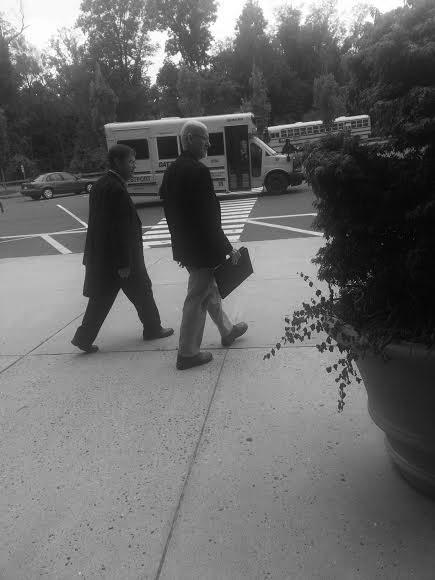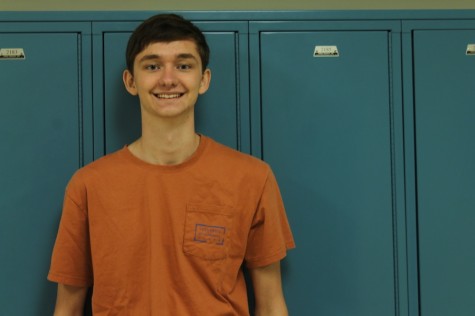
The echoes of shots have died away, news coverage has quieted, the stony shock has thawed. Almost a year after Adam Lanza shot and killed 20 children and six adults at Sandy Hook Elementary School, a memorial playground and the blueprints for a new school show a community trying to heal. The Newtown shootings have left an enduring emotional impact, which has heightened national focus on school safety.
At Staples, though, little seems to have changed: Westport schools have mostly dealt with security at the level of the Board of Education (BOE), with concrete changes not yet reaching students and teachers
Many feel comfortable with the current level of security. But when compared to some nearby towns, Westport’s response to Newtown is less palpable, and some see other opportunities to bolster security at Staples.
Steps taken to increase security at Staples include the creation of a security liaison between Westport police and the school district, the establishment of the School Safety and Security Committees, which will help develop and implement changes in security, and a town/school security task force which will organize security projects.
In terms of concrete projects, a Request for Proposal (RFP) for new door handles that lock from the inside is underway, according to Elaine Whitney, chair of the BOE.
On a broader scope, Westport schools hired Kroll Advisory Services to conduct an audit to assess security at Staples, although the approval was not finalized until June.
The audit involved a two-day survey of the school by Kroll employees, who stayed at school from 7 a.m. to 7 p.m. and spoke to teachers, administrators and parents. Kroll’s report on Staples’ security released to the Superintendent and BOE in November. From there, discussion can start about more changes to security.
Right now, for students and staff, going to school doesn’t feel different. All visitors are buzzed into the school, a policy that was in place before Newtown. “We’re just trying to reinforce [the policies that presently exist] and keep on top of those things,” security guard David DuBois said.
In some ways, the lack of stringent policy upholds a standard of openness. “I don’t want to see the environment that we have and I think we all cherish turn into something that we’re not comfortable with,” Principal John Dodig said.
Students agreed. “What is [the administration] going to do? Install a metal detector in front of our campus and at every single door?” Sara Banbury ‘14 said. “We’re already at a good place.”
One method of bolstering security doesn’t involve locks or cameras. Administration and teachers have a shifted focus to the internal threat, the student who may feel alone or disenfranchised. “I put my energy in making sure that we don’t have a disgruntled kid in our building who we know nothing about,” Dodig said.
English teacher Michael Fulton also feels the heightened emphasis on mental health. “We talk about [keeping an eye on students] all the time. Anyone even joking – bomb, gun, or dropping the word depression. All the teachers that I’m close with are very aware of those things,” he said.
The tragedy’s effects spread from emotional awareness to the way students think about safety. For example Sam Adelman ‘14 is more careful about opening doors. “Last year right around the time of Sandy Hook I let an adult into the building and assumed they were a teacher, but after Sandy Hook I realized – what if they weren’t?” he said.
The tacit response to Newtown is still present, independent of the process of changing security policy.
However, others note that the lack of true changes feels lax. “Much feels the same here and I’m not sure how to feel about that. We’re going on the fact that this is a friendly place,” Fulton said. “But we have no control over those things.”
“I wouldn’t advocate putting a high police presence here. But it would be nice if the cops were around more often,” added an anonymous teacher. Furthermore, he felt that the school does not pay enough attention to possibly disenfranchised students.
However, both qualified that there is a balance: security that is too heightened can compromise Staples’s atmosphere.
“[School security] is like the goldilocks principle: not too much, not too little, not too hot, not too cold. I think there could be more done, but you don’t want to lose the atmosphere we have,” the anonymous teacher said. “You don’t want to put a tank on the lawn. You don’t want battalion snipers on the roof. You don’t want any school to be like that.”
Fulton agreed, “I don’t know if I want to feel like I work in a prison. It’s a tough call.”
Regardless of the extent of changes, some felt that action just wasn’t taken soon enough. “In retrospect, we could have done easy and sensible things without waiting for the audit,” former BOE member Michael McGovern said. “The discussion about the audit would have been more helpful if we included police and fire at the beginning of it. We could have done a better job.”
However, Dodig disagreed that changes should be made sooner citing his belief that it would be nearly impossible to stop someone who wanted to commit a shooting.
“Suppose you wanted to come in with two backpacks full of bad stuff [after school] and hide it in the building. How would we prevent that? You’d have to have just one entrance to the building, everything else would have to be bricked up and you’d have to have a guard here all the time,” Dodig said. “That’s not Staples High School, that’s not Westport.”
A few miles away, Roger Ludlowe Middle School took a different approach. Since the shooting, all doors have been locked at 8 a.m., ten minutes before the school’s start time. According to Barbara Milet, a secretary, in the few months immediately following Newtown, secretaries, administrators and custodians had to physically open the doors.
Towards the end of last year, the school installed a buzzer system, and faculty members now have swipe cards to accommodate the strict locked door policy. “The front door had always been open,” Milet said. “It was tedious at first, but you do what you have to do for safety.”
Stamford too has made concrete changes in the year since Newtown.
According to John Perrotta, Director of Security for Stamford Public Schools, not only has school staff been educated to be more aware of their surroundings, but the schools have installed more cameras, and visitors now must answer several questions before entering the building.
Perrotta also said that Stamford Public Schools are looking to install bulletproof glass and an alarm system with alert buttons that could notify administrators to call the police.
“Every school could be more safe,” Perrotta said. “You can always increase security no matter how safe you are.”
With the audit results coming back in November and the RFP underway, the process of fortifying school security will continue.
Whitney estimates that once the funding is approved for the door handles, the installation will be prompt. The estimated net cost of the locks is $345,182 thanks to a state-issued security grant, which reimburses 20.7% of spending for specific security projects.
Once the broader audit comes in, the BOE and security task force will review it. Upcoming changes in security will depend on the audit’s contents.














































